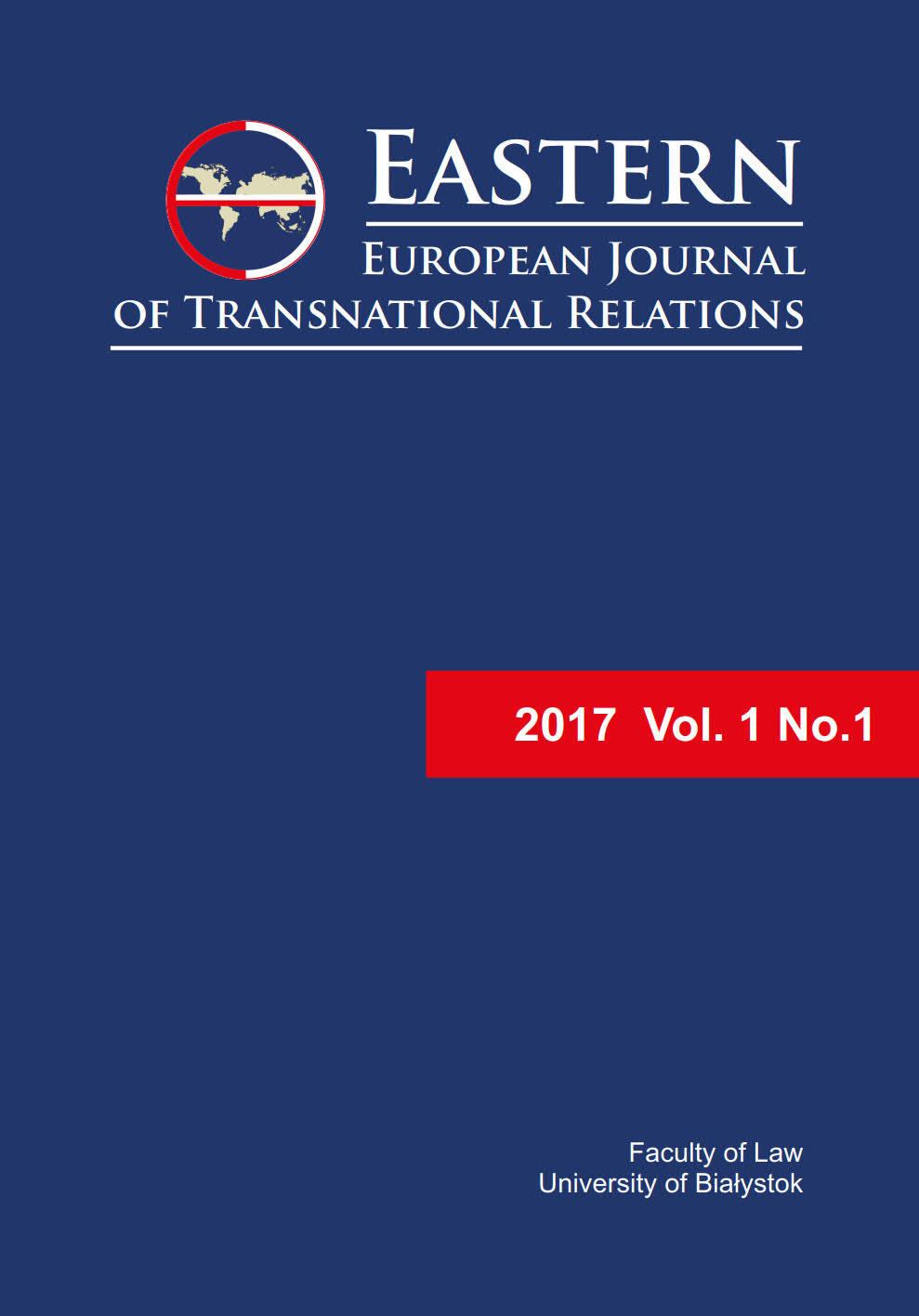The Border University Network as a Response to Academic Challenges in the Field of Internationalization
DOI:
https://doi.org/10.15290/eejtr.2017.01.01.01Keywords:
internationalization in higher education, Border University Network, international cooperation of universities, Eastern European universitiesAbstract
In the context of the upcoming challenges for science and higher education – both in the field of academic research and students education, the internationalization of scientific research and development of transnational academic contacts appears necessary and unavoidable. It has been one of the priorities of Polish universities. The paper presents an example of its implementation initiated by the University of Bialystok. Taking advantage of its cross-border location, the University created a platform for the exchange of scientific and didactic experiences with researchers from the Eastern European border states and students studying at their respective academic centers. This way, the Border University Network became the largest university consortium in this part of Europe. Its effect is one of scientific and didactic cooperation in the exchange of research and implementation services, use of infrastructure and apparatus as part of joint scientific ventures, joint grant applications, and publishing of international scientific journals which will enable scientific research to be presented on a global scale, not just on a regional and national scale as before. Internationalization becomes an obvious matter to which the Polish, as well as the entire Eastern European scientific environment, has to get used to. That is why every attempt of making it real is worth analyzing and developing.
Downloads
References
Bergan, S. (2011). Internationalization of Higher Education: a Perspective of European Values. In W. Martyniuk (Ed.), Internacjonalizacja studiów wyższych (pp. 11–27). Warsaw: Fundacja Rozwoju Systemu Edukacji. Retrieved from http://czytelnia.frse.org.pl/media/internacjonalizacja-studiow-wyzszycht.pdf
Błaszczak, D. (2016). Sieć Uniwersytetów Pogranicza – konfiguracja społeczeństwa sieciowego na wschodnim pograniczu Polski. Pogranicze. Studia Społeczne, 2016, tom XXVII cz. 1. https://doi.org/10.15290/pss.2016.27.01.14
MNiSW stawia na umiędzynarodowienie polskiej nauki. (2017, November 8). Retrieved December 2, 2017, from http://www.nauka.gov.pl/aktualnosci-ministerstwo/mnisw-stawia-na-umiedzynarodowienie-polskiej-nauki.html
Program Umiędzynarodowienia Szkolnictwa Wyższego [Higher Education Internationalization Programme]. (2015, June 18). Ministry of Higher Education. Retrieved from http://www.nauka.gov.pl/g2/oryginal/2015_06/ed5a831ec649a91c619602597f1ae553.pdf
Rozmus, A., & Waltoś, S. (Eds.). (2016). Szkolnictwo wyższe w Polsce. Ustrój. Prawo. Organizacja. Wolters Kluwer.
Siwińska, B. (2014). Uniwersytet ponad granicami: internacjonalizacja szkolnictwa wyższego w Polsce i w Niemczech. Warsaw: Dom Wydawniczy ELIPSA.
The agreement on the Border University Network signed. (2015, June 18). Retrieved December 2, 2017, from https://sup.uwb.edu.pl/umowa-sup.html.
Downloads
Published
Issue
Section
License
Copyright (c) 2017 Leonard Etel, Maciej Perkowski, Łukasz Kierznowski

This work is licensed under a Creative Commons Attribution 4.0 International License.
1. The Author declares that he or she has created the written work and holds exclusive and unlimited copyright /both moral and property rights/ and guarantees that no third parties have rights to the work.
2. In the view of the Copyright and Related Rights Act, a work must fulfill the following criterion:
a) be a manifestation of creative work,
b) have an individual character („author’s personal stamp”),
c) have a set form.
3. The Author declares that the text has not been previously published (under the same or different title, or as a part of another publication).
4. The Author allows (grants a non-exclusive license) the publishing house of University of Białystok to use the scholarly text to:
- preserve and multiply by means of any technique; save in a digital form with no limitations as to the manner and form of digital preservation;
- upload online with no limitations as to the place and time of access.
5. The Author grants consent for editorial changes made in the work.
6. The Author grants the University of Białystok rights free of charge for the duration of property copyright with no territory limits. The University has the right to grant sublicenses in the acquired rights.
7. Granting a non-exclusive license allows the Author to preserve their rights and allows other parties to make use of the work according to sublicensing agreement with provisions identical as those of Attribution 4.0 Internacional License (CC BY 4.0), available online at: https://creativecommons.org/licenses/by/4.0/.
8. The Agreement has been concluded for an indefinite period of time.
9. Because of costs born in preparation of the work for publishing, the Parties oblige themselves to act in good faith and refrain from declining to grant licenses.
10. To all matters not settled herein, provisions of the Civil Code and Copyright and Related Rights Act of 1994, February 4 shall apply.
11. All disputes shall be resolved by a court of local jurisdiction for the place of seat of University of Białystok.


